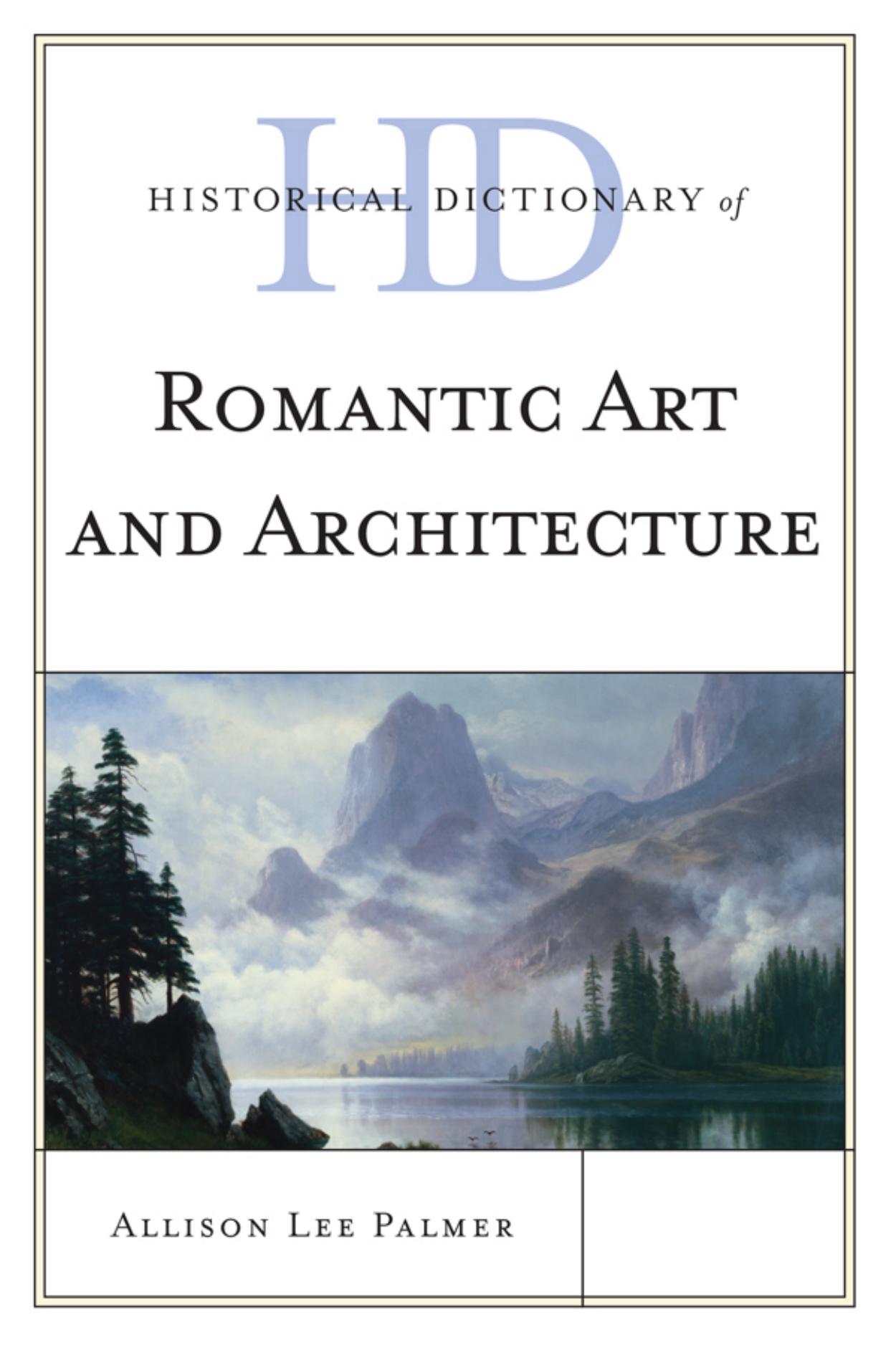Historical Dictionary of Romantic Art and Architecture by Allison Lee Palmer

Author:Allison Lee Palmer
Language: eng
Format: epub, pdf
Tags: undefined
Publisher: Rowman & Littlefield Publishers
Published: 2012-01-01T16:00:00+00:00
LOUTHERBOURG, PHILIP JAMES DE (1740–1812)
Philip James de Loutherbourg is known for his dramatic landscape paintings of natural disasters such as avalanches and volcanic eruptions, as well as man-made interventions such as fiery sea battles and industrial development in the countryside. His interests are based on late 18th-century scientific and industrial advances found primarily in England. Loutherbourg was born in Strasburg, France, where his father was a miniature painter, and he moved to London in 1771, where he spent most of his life. By the 1780s, Loutherbourg was painting highly dramatic images of volcanic eruptions and other natural phenomena, similar in their scientific interest to the work of Joseph Wright of Derby and in their theatrical presentation to the volcanic landscape views of Michael Wutky.
Loutherbourg’s Avalanche in the Alps (1803; Tate Gallery, London) is a good example of the idea of tragedy set in motion as a small traveling party rushes out of the way of a huge falling boulder. Numerous travelers had experienced the difficulties of Alpine travel in this era and knew of the dangers along the elevated, narrow dirt paths. The Alps were a source of awe described in pictorial detail by numerous artists from the Renaissance onward, but Romantic-era artists focused on the dangerous aspects of this mountain range.
Loutherbourg’s painting Coalbrookdale by Night (1801; Science Museum, London) shows the Bedlam Furnaces, part of the Coalbrookdale Company in Shropshire, belching out smoke and fire into the night sky. The gritty town features several homes on a hill that are covered in soot, while disheveled people wander down a dirty street littered with abandoned factory machinery and waste. This painting is one of the first images to reveal the negative impact of the Industrial Revolution in the English countryside, where entire towns were transformed into coal-mining and iron foundry ventures filled with smoke, ash, and soot. Such works, which at times reveal the power of nature, also showed the ability of mankind to manipulate his environment in this modern industrial era. Thus, while the Industrial Revolution was celebrated by scientists and industrialists for its technological advances, artists were the first to point out its negative impact on the environment. See also MARTIN, JOHN (1789–1854).
Philip James de Loutherbourg, Coalbrookdale by Night (1801): Science Museum, London
Wikimedia Commons—The Yorck Project.
Download
Historical Dictionary of Romantic Art and Architecture by Allison Lee Palmer.pdf
This site does not store any files on its server. We only index and link to content provided by other sites. Please contact the content providers to delete copyright contents if any and email us, we'll remove relevant links or contents immediately.
Periodization Training for Sports by Tudor Bompa(8170)
The Body: A Guide for Occupants by Bill Bryson(4974)
The MacArthur Bible Commentary by John MacArthur(4749)
The Sports Rules Book by Human Kinetics(4290)
What It Really Takes to Get Into Ivy League and Other Highly Selective Colleges by Hughes Chuck(3695)
Marijuana Grower's Handbook by Ed Rosenthal(3619)
The Sprouting Book by Ann Wigmore(3543)
The Martian by Andy Weir(3304)
Salt, Fat, Acid, Heat: Mastering the Elements of Good Cooking by Nosrat Samin(3106)
The Bread Bible by Rose Levy Beranbaum(3004)
Sapiens and Homo Deus by Yuval Noah Harari(2987)
Harry Potter 4 - Harry Potter and The Goblet of Fire by J.K.Rowling(2987)
The Marketing Plan Handbook: Develop Big-Picture Marketing Plans for Pennies on the Dollar by Robert W. Bly(2975)
Classic by Mary Berry(2941)
Martha Stewart's Baking Handbook by Martha Stewart(2796)
Screenplay: The Foundations of Screenwriting by Syd Field(2573)
The Plant Paradox by Dr. Steven R. Gundry M.D(2545)
50 Economics Classics by Tom Butler-Bowdon(2523)
The Cambridge Grammar Of The English Language by Rodney Huddleston Geoffrey K. Pullum(2382)
